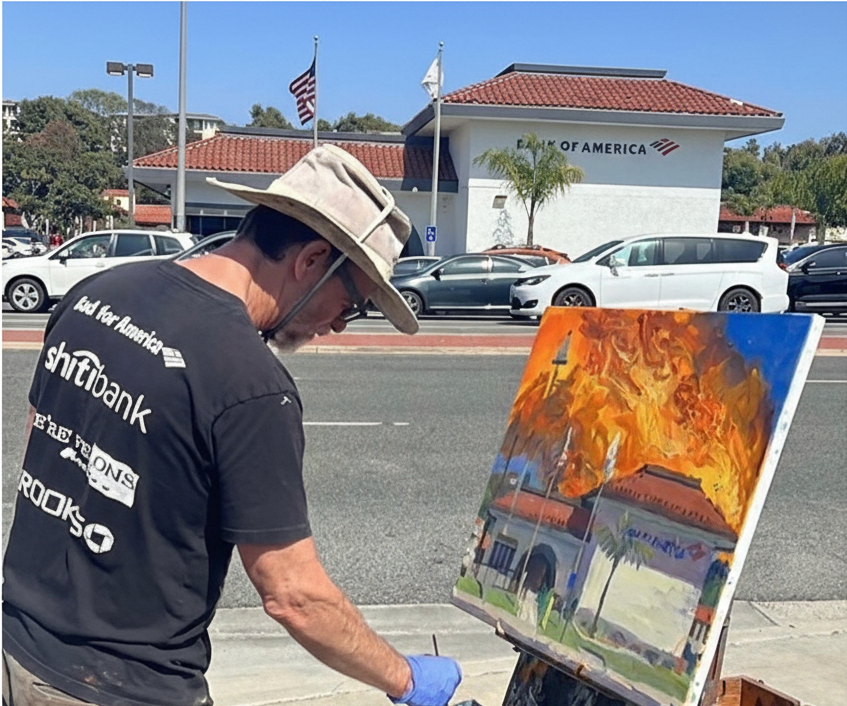Why This Street Artist Paints Banks in Flames While Standing Across From Them, and What His Work Really Means
Art has always been about pushing boundaries, provoking thought, and forcing people to look twice at the world around them. But sometimes, an artist comes along who takes that to another level, choosing not just to capture what’s in front of them, but to reimagine it in a way that sparks conversation. That’s exactly what this artist has been doing—setting up his easel across the street from major banks and painting them not as calm buildings of finance, but as if they were engulfed in flames. He does this right there in plain sight, with the bank itself standing solid and unburned just behind his canvas, while his painting shows a very different story.
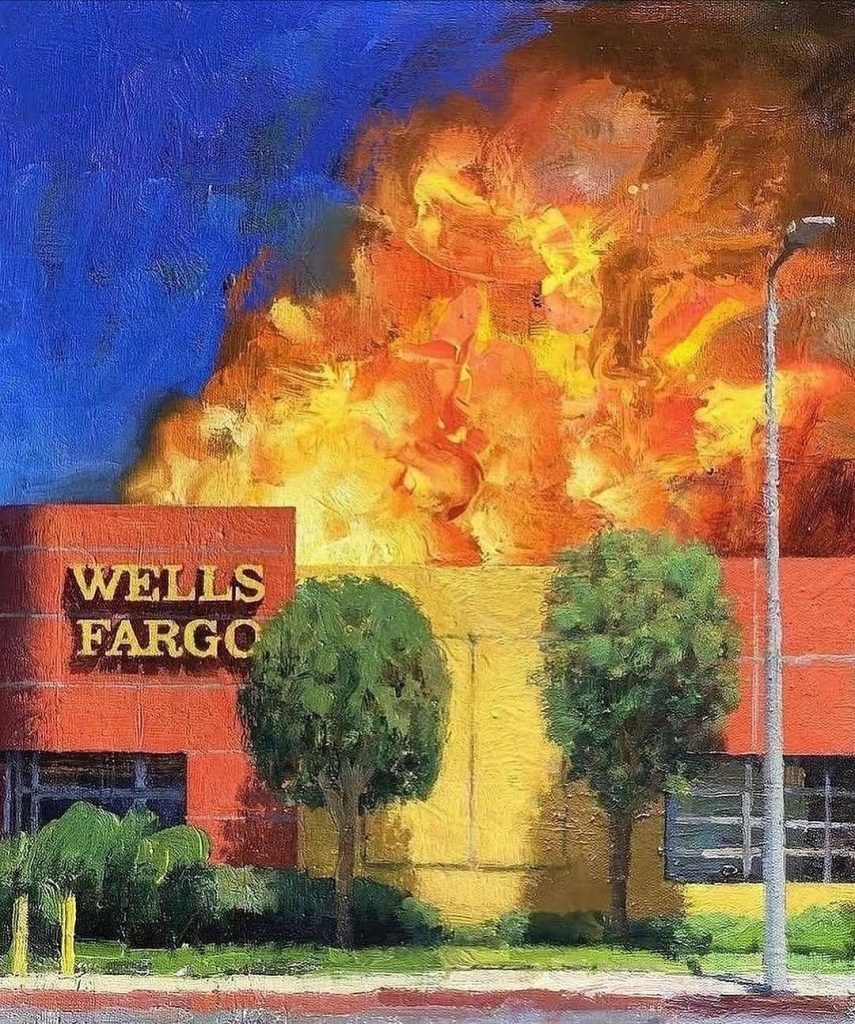
The image of him working—wearing a wide-brimmed hat, his hands messy with paint, standing across from a recognizable Bank of America branch—has gone viral online. In the photo, the actual bank sits quietly across the street, while on his canvas it’s ablaze, fire roaring out of the windows in bold orange and red strokes. At first glance, it’s shocking. But the more you think about it, the more you realize the flames aren’t literal. They’re symbolic. They’re a way of making people pause, question, and reflect on what banks mean in our lives and what they’ve come to represent over the years.
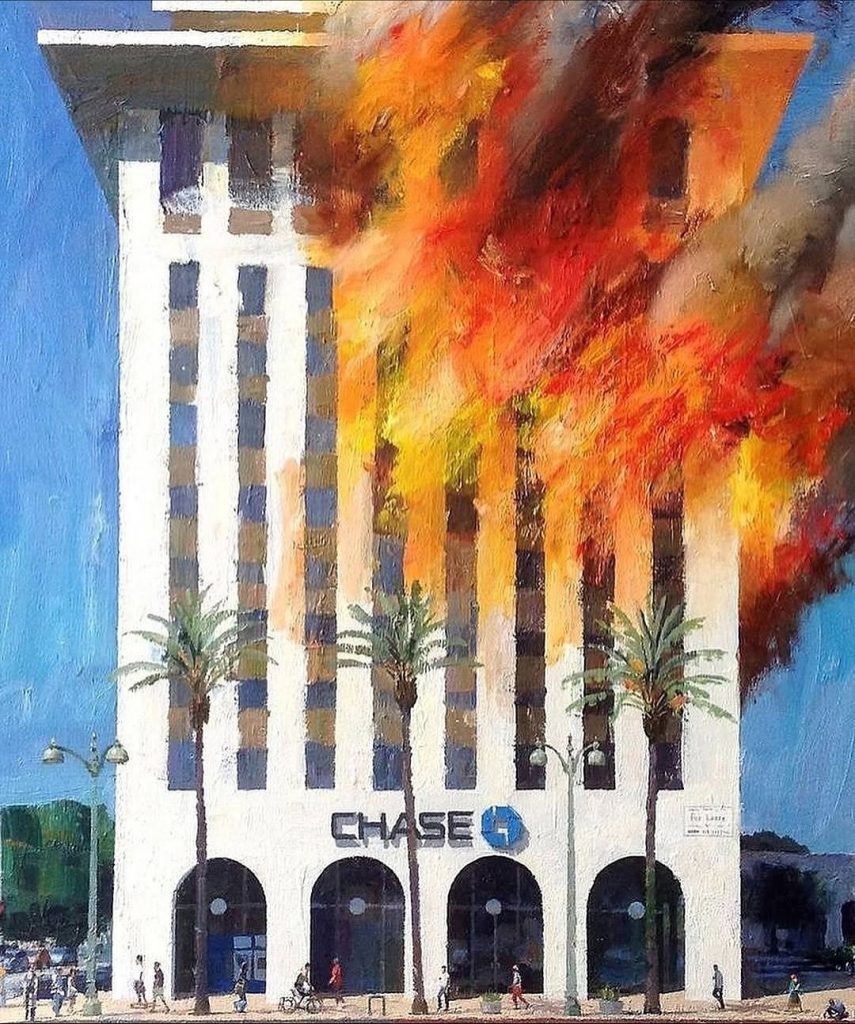
In many ways, his work is a modern-day form of protest art. Instead of holding a sign or shouting slogans, he uses his paintbrush. Instead of speeches, he uses color, light, and contrast. By painting banks in flames, he’s expressing something deep about the way many people feel toward financial institutions. For generations, banks have been both symbols of opportunity and of frustration—places where people safeguard their money but also places that have, at times, been blamed for economic crises, foreclosures, and inequality. Whether or not you agree with that perspective, it’s undeniable that the image of a bank on fire makes you think about those tensions.
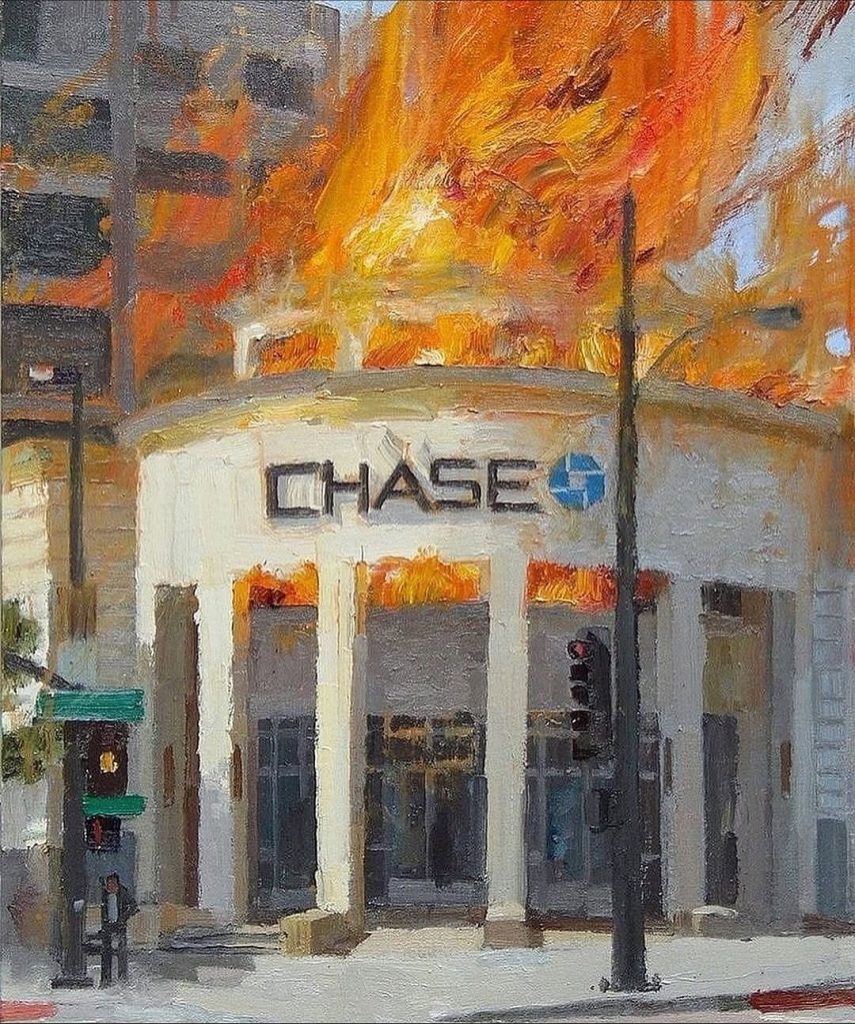
The act of standing across the street and painting adds another layer of power to the message. He’s not tucked away in a studio, imagining these flames in isolation. He’s right there, in public, with the real building in his sightline. People walking or driving past can see both—the bank in reality, and the bank as he sees it in his imagination. It’s a kind of performance in itself. He’s not hiding his critique. He’s putting it out there boldly, brushstroke by brushstroke, for anyone passing by to witness.
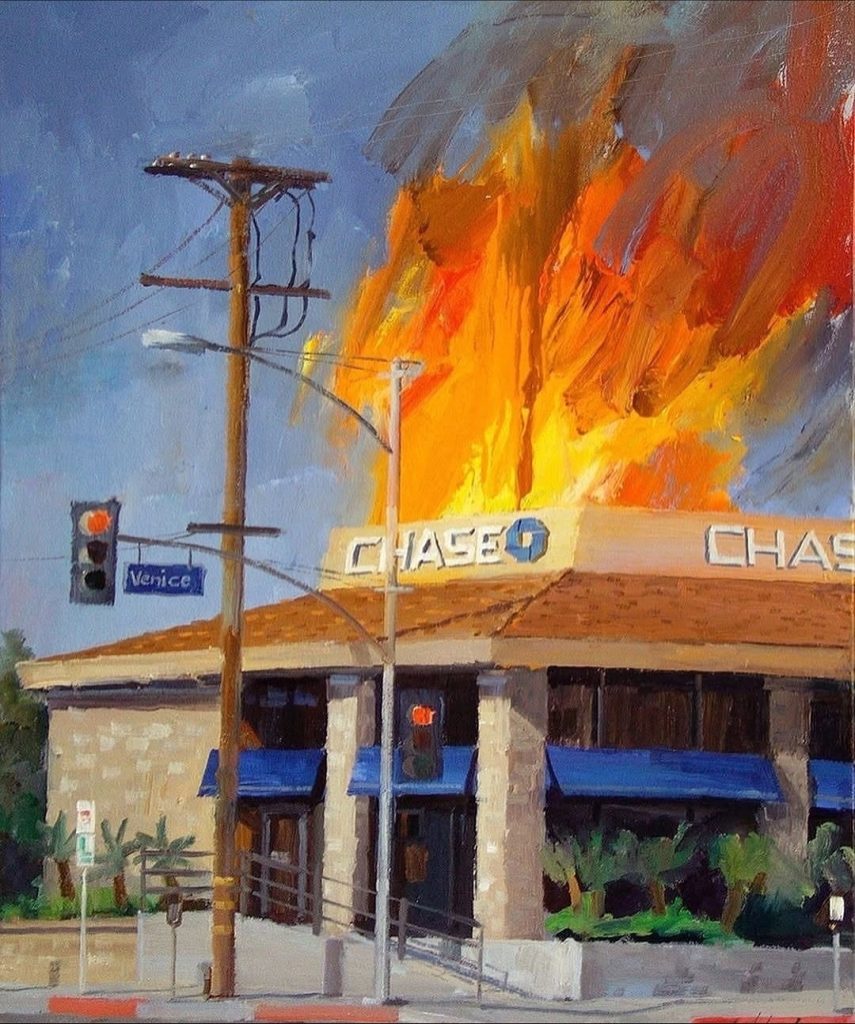
Street art and protest art have long been intertwined. From graffiti on walls to murals honoring social movements, artists have always found ways to bring their messages directly into public spaces. What makes this artist’s approach so unique is the calmness of his method. He doesn’t spray-paint slogans under cover of night. He doesn’t disrupt traffic or shout at passersby. Instead, he quietly sets up his canvas, dips his brush, and paints. It’s a kind of silent rebellion, one that feels both bold and strangely peaceful at the same time.
The flames themselves are painted beautifully, with layers of orange, yellow, and red blending into thick plumes of black smoke. They look alive, chaotic, and almost too real, which is part of why the paintings grab so much attention. When you look at the image of the finished painting, you can almost feel the heat of the fire and the danger of the destruction. And yet, just behind the canvas, the bank remains standing, ordinary and untouched. That contrast is where the power lies.
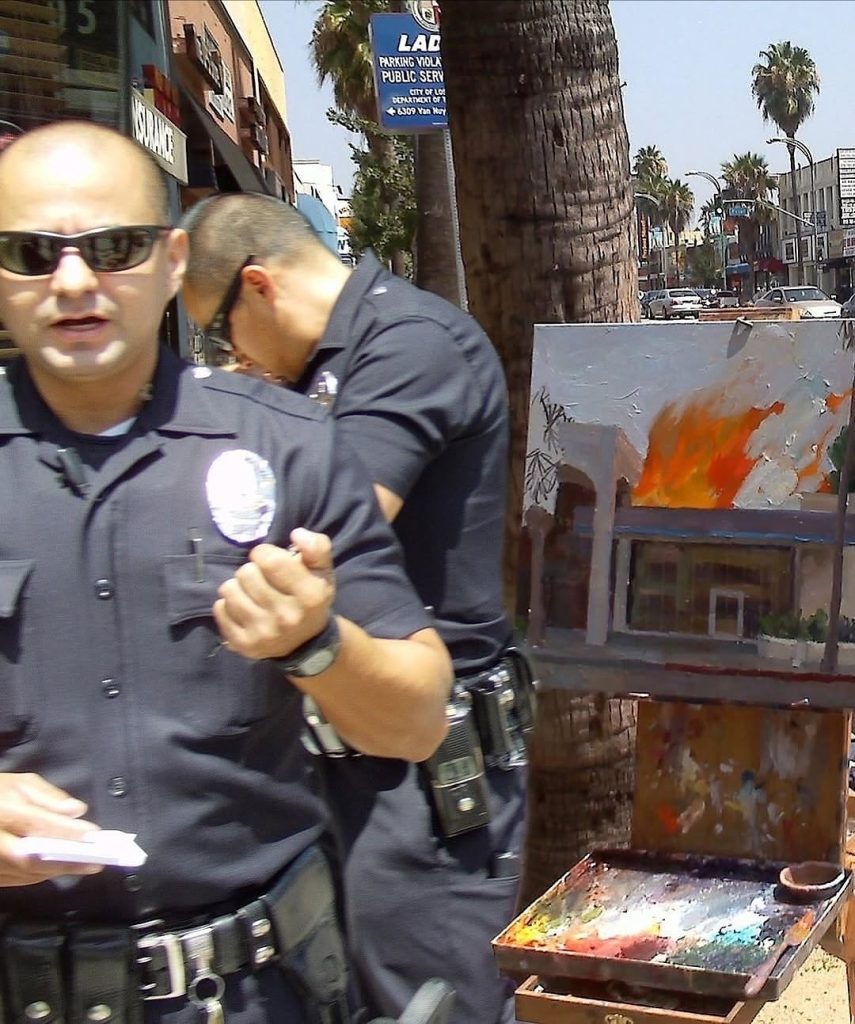
Some people might look at his work and see it as anger, as an attack on the idea of banks. Others might see it as metaphor, a way of showing that the structures we take for granted are not as permanent as we think. In history, banks have failed, economies have collapsed, and what once seemed indestructible has crumbled. By painting these buildings on fire, he’s reminding us of that fragility, of the reality that nothing is immune to collapse. It’s a powerful reminder that what feels safe and unshakable today could look very different tomorrow.
But beyond the politics and the symbolism, there’s also something deeply human about what he’s doing. Every passerby who sees him at work, brush in hand, gets a glimpse into his perspective. They’re reminded that art isn’t just about beauty. It’s about interpretation, about using creativity to comment on society. He’s starting conversations with nothing more than canvas and paint. Some people might laugh, some might get angry, and others might simply stop and think. That’s the whole point.
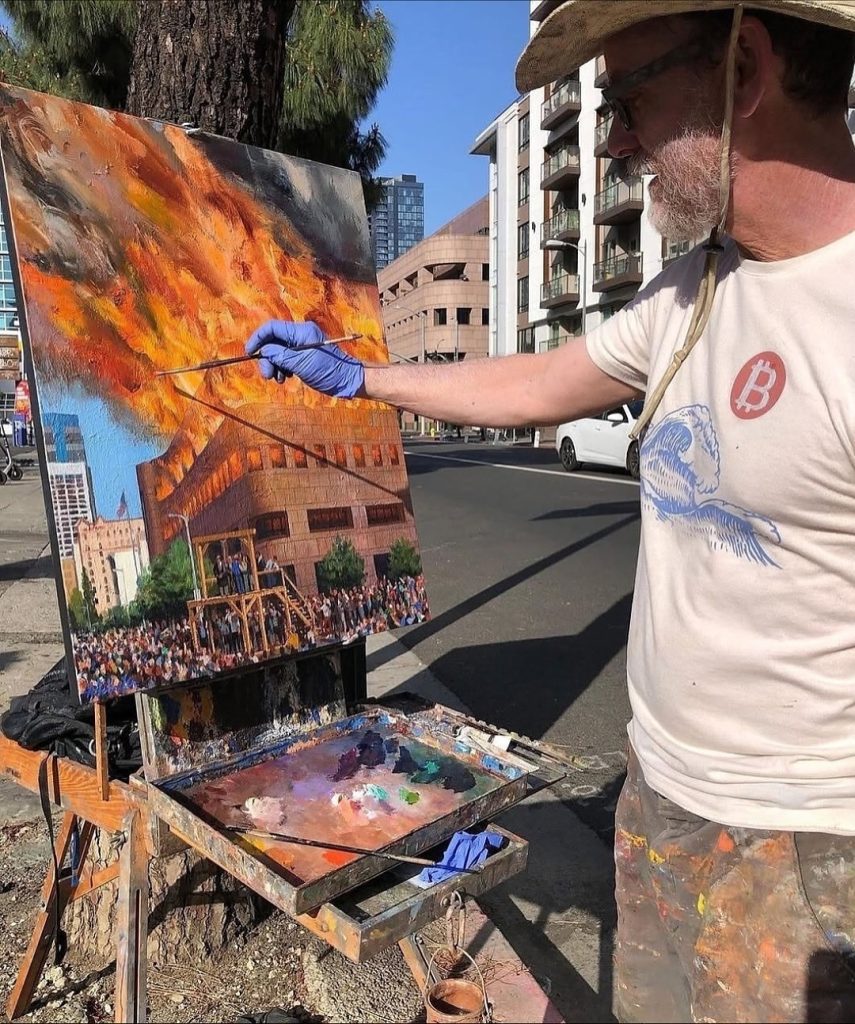
The photo of him painting has spread far and wide online, sparking debates and admiration. People have shared it with captions ranging from “iconic” to “brilliant” to “unsettling.” And that’s what good art does—it unsettles. It pushes you out of your comfort zone. Whether you agree with his message or not, you can’t deny the courage it takes to stand in broad daylight, across from a bank, and paint it in flames. He’s putting his perspective out there for the world to see, knowing full well that not everyone will appreciate it.
It also raises questions about the role of artists in society today. In a world dominated by digital screens, social media feeds, and endless news cycles, how do you get people to stop and pay attention? This artist has found a way. By combining performance, symbolism, and traditional painting, he’s created something that’s both Instagram-ready and deeply rooted in artistic tradition. His easel may be simple, but the message it carries is powerful.
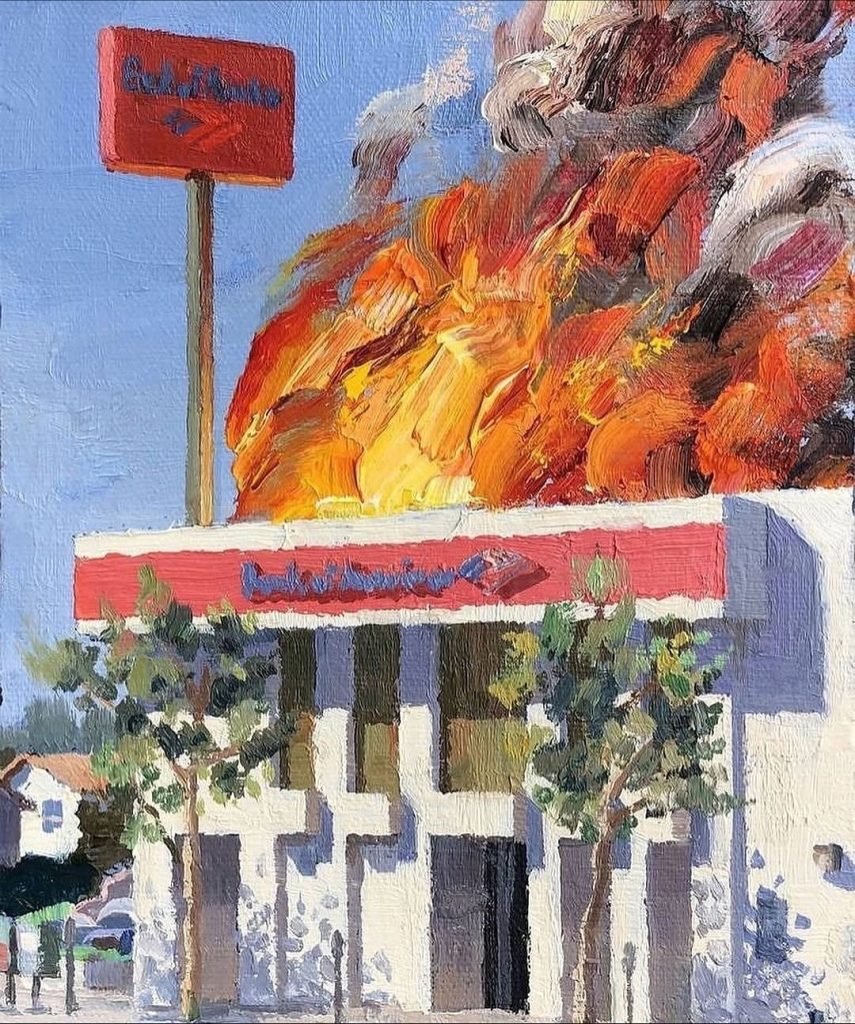
For me, looking at his work, I can’t help but think about how fragile the things we rely on really are. Banks represent stability, order, and power. But when painted in flames, they remind us of uncertainty, impermanence, and vulnerability. It’s unsettling, yes, but also strangely freeing. It suggests that nothing is too big to be questioned, too established to be critiqued. That’s what makes his paintings so compelling—they’re not just about banks. They’re about everything we place our trust in, everything we assume will always be there.
In the end, whether you see his work as rebellious or simply artistic, it’s impossible to deny the impact. This artist, standing quietly across the street with his canvas, has found a way to make people look twice, to start conversations, and to feel something. And maybe that’s the most important role of art in any time: to remind us to question, to reflect, and to see the world through someone else’s eyes, even if just for a moment.

Daniel Reed is a curious mind with a passion for breaking down how the world works. With a background in mechanical engineering and digital media, he turns complex ideas into easy-to-understand articles that entertain and inform. From vintage tools and modern tech to viral internet debates and life hacks, Daniel is always on the hunt for the “why” behind the everyday. His goal is simple: make learning feel like scrolling through your favorite feed — addictive, surprising, and fun.
